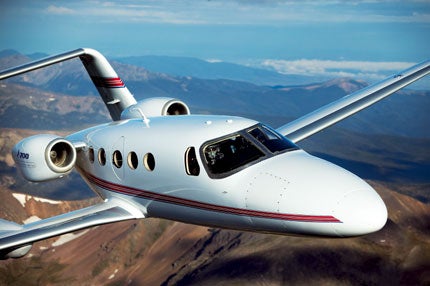The race to bring the first of the very light jets to certification is turning final, And the upstart from Denver is looking like it may be the new leader to the finish line
 The last rush of specific aircraft types came in the late 1970s when Piper, Beech and Grumman-American all fielded light-light twins—the Seminole, Duchess and Cougar, respectively. At the time, general-aviation manufacturers were turning out 15,000-plus airplanes a year, and pilots were training at a record rate. Practically everyone was predicting there would be a viable step-up market for new aviators transitioning to twins in search of the peak of the pyramid—an airline job.
The last rush of specific aircraft types came in the late 1970s when Piper, Beech and Grumman-American all fielded light-light twins—the Seminole, Duchess and Cougar, respectively. At the time, general-aviation manufacturers were turning out 15,000-plus airplanes a year, and pilots were training at a record rate. Practically everyone was predicting there would be a viable step-up market for new aviators transitioning to twins in search of the peak of the pyramid—an airline job.Practically everyone was wrong. The big multi-engine training market never materialized, light-light sales foundered, and by 1982, all three companies had discontinued their multi-trainers. Piper would later revive the Seminole, but twin-engine training would never approach the level the industry aspired to in the late ’70s.
Today, very light jets (VLJs) are the new rage, but while the hype may, once again, exceed the reality, there’s good reason to believe this may not be a fad. Aspirants to the VLJ market hope thousands of high-end single owners, medium-twin drivers and turboprop operators will be willing to step up to jet power. All the proposed light jets are being designed for single-pilot operation in the 310- to 400-knot range with a pilot, and four to six passengers aboard for somewhere between $1.2 and $2.5 million. Currently, the least expensive jet on the market is the $4.2 million Cessna CitationJet.
These days, you could spend well over $1 million for a Piper Mirage or Beech 58 Baron. Turboprops such as the Piper Meridian, SOCATA TBM-700 and Pilatus PC-12 start just under $2 million and escalate to well over $3 million. The VLJs promise performance that’s 50 to 100 knots quicker than all the models above for the same or less money.
Microsoft millionaires Vern Raburn and Paul Allen have invested a reported $400 million developing the Eclipse 500, and no matter how talented the airplane, certification is still far from the horizon. Cessna may just wind up spending a similar amount on its own upcoming Mustang to compete for the VLJ dollar, but that airplane won’t be available until 2006 or later. Diamond Aircraft’s single-engine D-Jet as well as Honda’s unusual twin-pylon entry are definite threats from big companies, but with indefinite development and production schedules. Most recently, the Epic Twinjet was announced at NBAA 2004 and still is an unknown quantity. Meanwhile, other small jets such as the Avocet, the Maverick and the Safire apparently have fallen by the wayside.
Then there’s Rick Adam and the A700. Adam was born to an aviation family. A pilot for the last dozen years, Adam’s father was a career Air Force pilot, his mother was a private pilot, and he’s a West Point graduate and former NASA launch officer on the Apollo program. He’s also an executive with the investment firm Goldman Sachs (a major investor in Adam Air-craft) and, like Eclipse’s Vern Raburn, made his fortune in the computer world. Adam’s concept was a centerline thrust piston twin, the A500, and a follow-on, jet-powered A700 derived from the same design.
Read More...